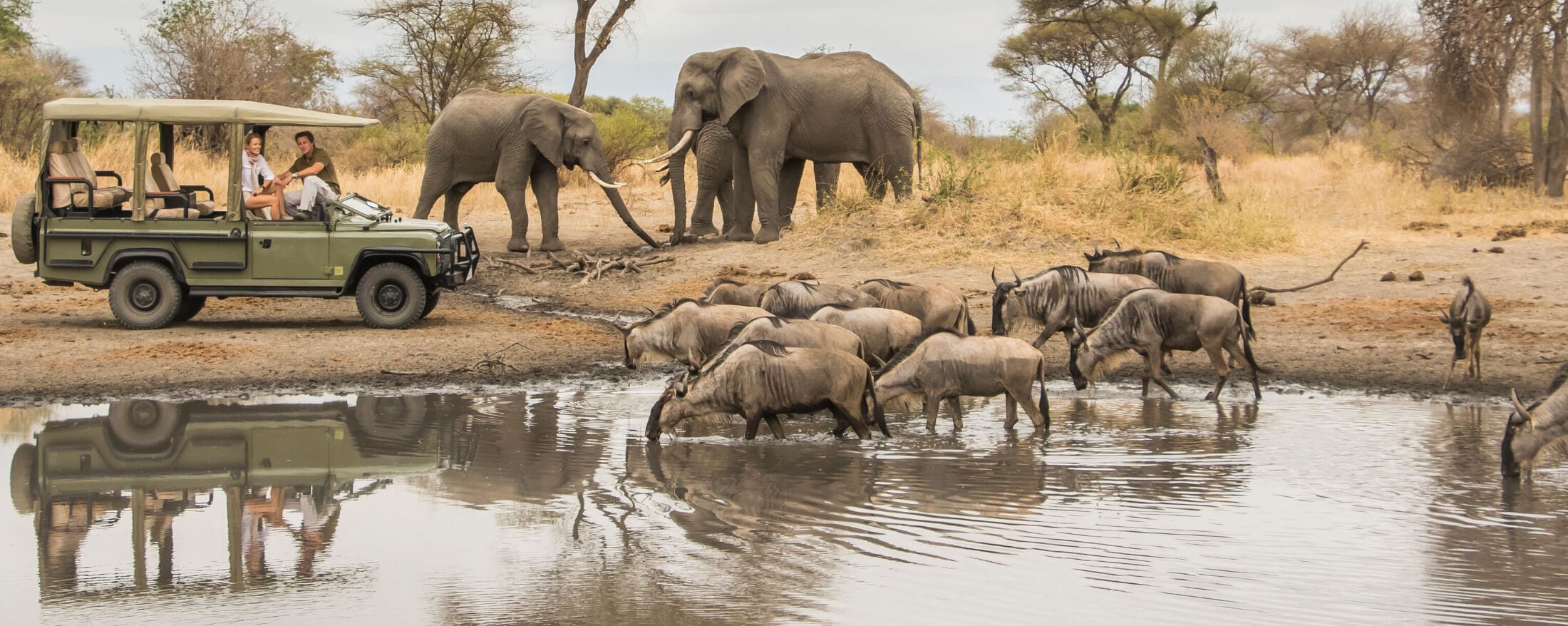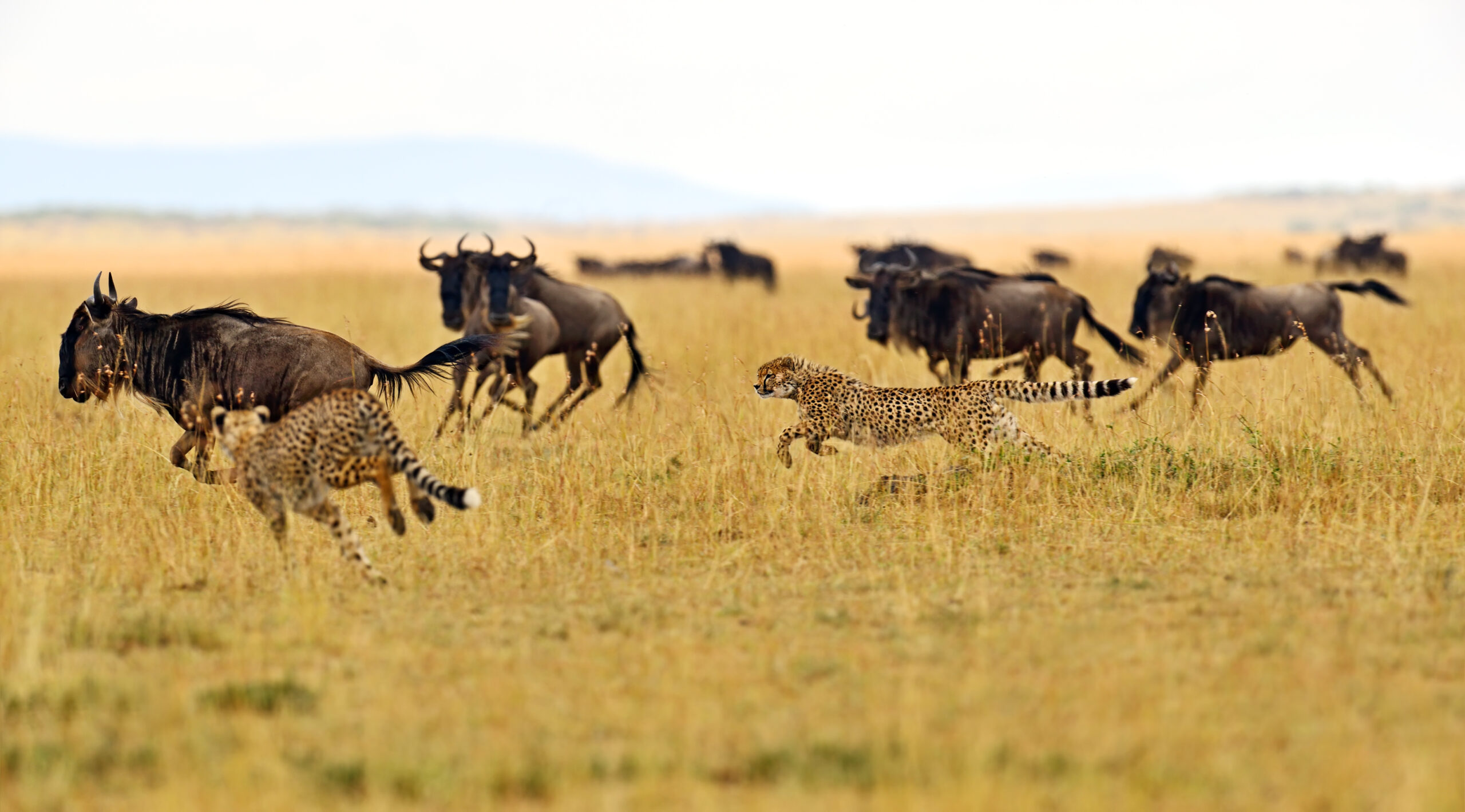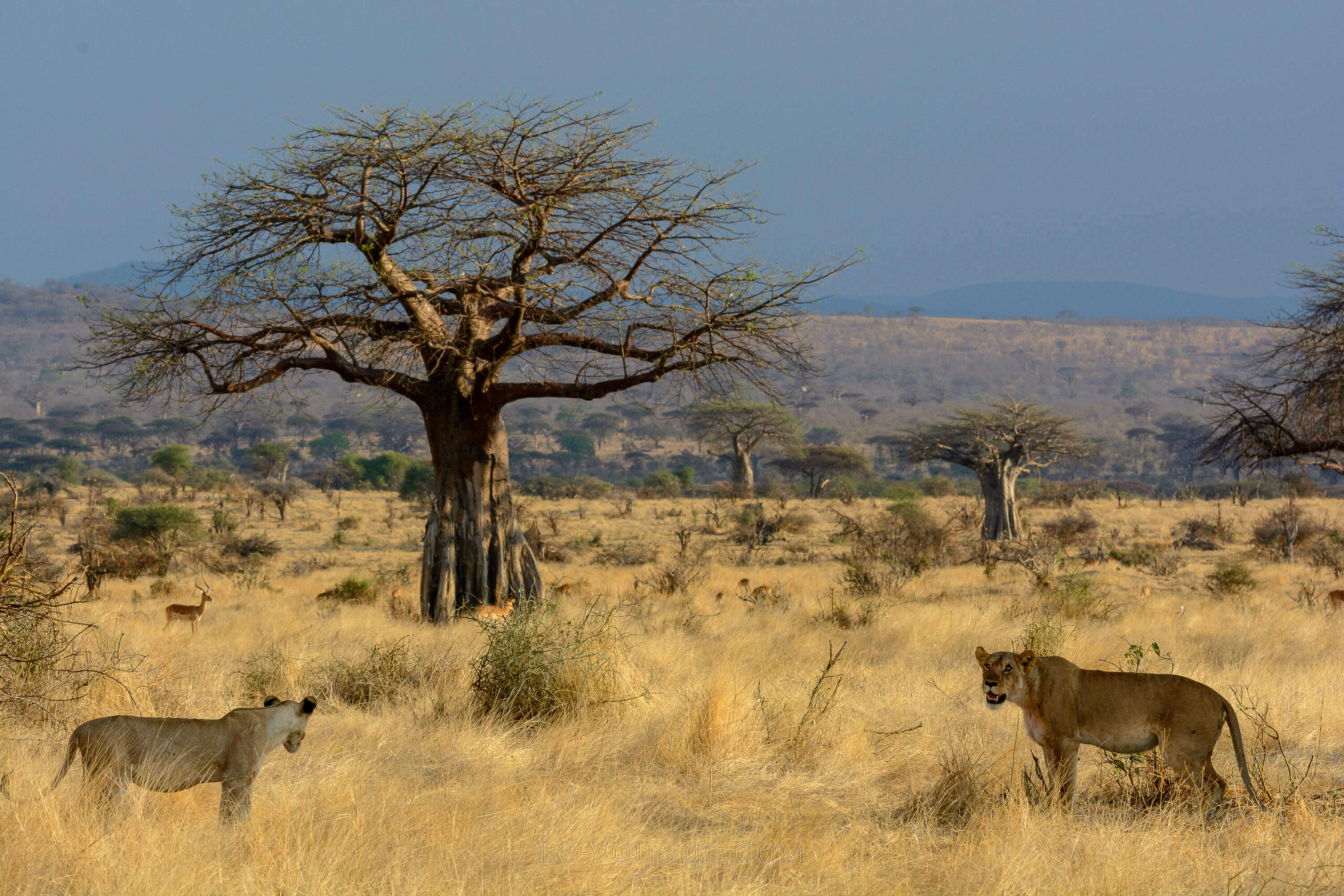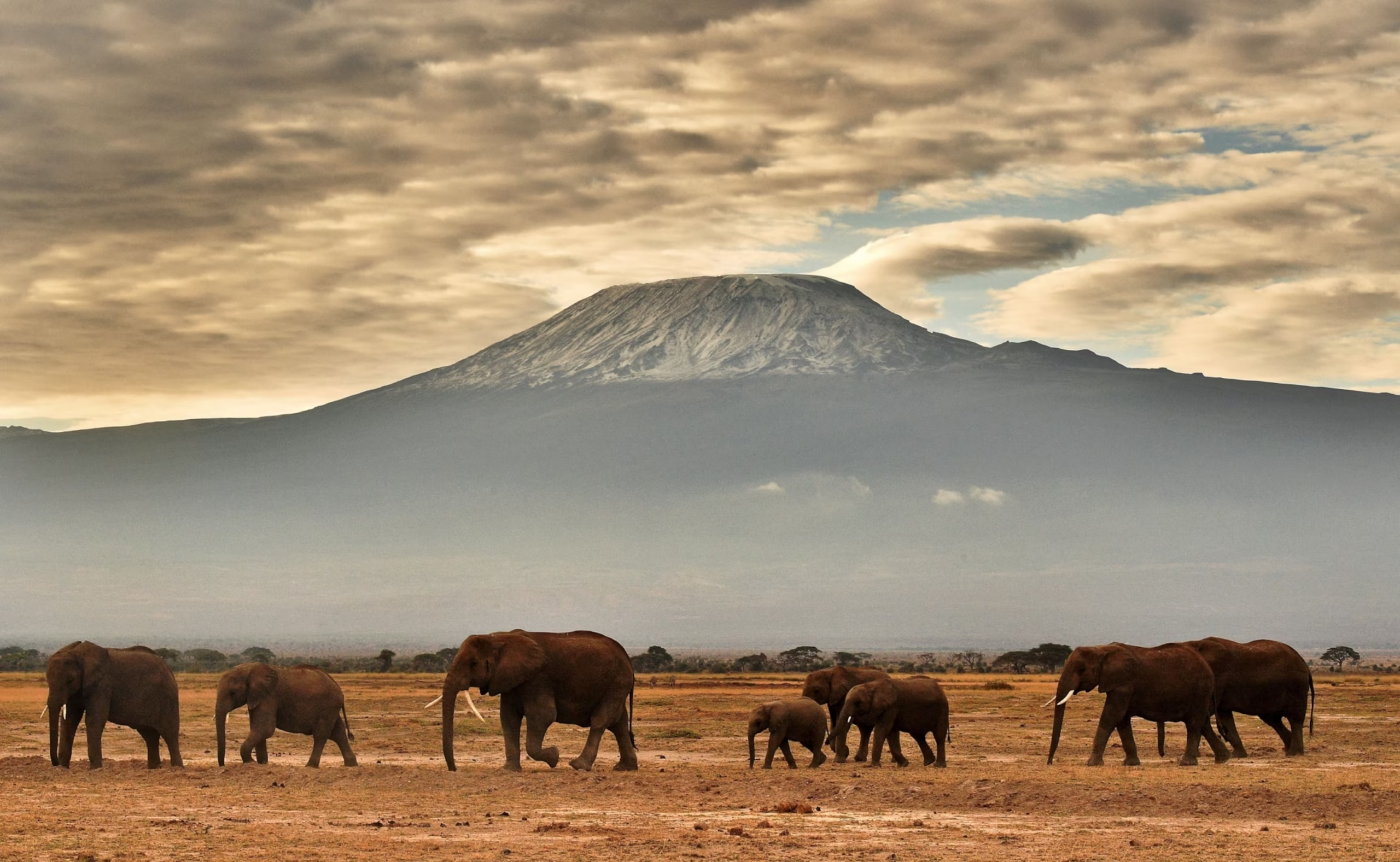Best Tanzania National Parks to Visit for Safari
Tanzania is home to some of Africa’s most iconic safari destinations, where conservation and sustainable tourism take center stage. Unlike many other countries, Tanzania’s national parks and reserves balance rich biodiversity with a commitment to preserving ecosystems for future generations. This focus ensures that travelers can experience an exclusive safari adventure while contributing to keeping Tanzania pristine and thriving. Tanzania’s parks are celebrated for their diversity—from the rolling plains of the Serengeti to the towering peaks of Mount Kilimanjaro and the lush greenery of the Ngorongoro Crater. Wildlife flourishes in these well-protected areas, where elephants, lions, leopards, and even rare species like the African wild dog roam free. Whether you’re a first-time safari-goer or a seasoned adventurer, Tanzania’s national parks and game reserves offer something for everyone. 3. Tarangire National Park
Tarangire is famous for its giant baobab trees and large elephant herds. This lesser-known gem offers an authentic safari experience with fewer crowds. The Tarangire River provides a vital water source, attracting animals such as giraffes, buffaloes, and predators like lions and leopards. Best Time to Visit: The dry season (June to October) is perfect for wildlife viewing as animals gather near the river. The green season (November to May) offers lush scenery and excellent birdwatching opportunities. Positive Impact: Tarangire’s conservation efforts focus on preserving elephant migration corridors and engaging local communities in sustainable tourism practices.  Nestled at the base of the Rift Valley escarpment, Lake Manyara National Park is known for its flamingo-filled lake and tree-climbing lions. This compact park offers a mix of landscapes, including forests, savannahs, and wetlands, supporting diverse wildlife and bird species. Best Time to Visit: The dry season (June to October) is best for wildlife viewing, while the wet season (November to May) is ideal for birdwatching. Positive Impact: Lake Manyara’s eco-friendly lodges and sustainable tourism initiatives help protect its unique habitats and wildlife.
Nestled at the base of the Rift Valley escarpment, Lake Manyara National Park is known for its flamingo-filled lake and tree-climbing lions. This compact park offers a mix of landscapes, including forests, savannahs, and wetlands, supporting diverse wildlife and bird species. Best Time to Visit: The dry season (June to October) is best for wildlife viewing, while the wet season (November to May) is ideal for birdwatching. Positive Impact: Lake Manyara’s eco-friendly lodges and sustainable tourism initiatives help protect its unique habitats and wildlife. 5. Ruaha National Park
Ruaha is Tanzania’s largest national park and one of its most remote, offering an off-the-beaten-path safari experience. Known for its high density of lions and elusive predators like leopards and wild dogs, Ruaha is a haven for wildlife enthusiasts seeking exclusivity. Best Time to Visit: The dry season (June to October) offers excellent game viewing, while the green season (November to May) reveals vibrant landscapes and newborn wildlife. Positive Impact: Ruaha’s conservation efforts aim to protect its unique ecosystems and engage local communities in preserving the park’s biodiversity. 7. Mount Kilimanjaro National Park
Mount Kilimanjaro is not only Africa’s highest peak but also a UNESCO World Heritage Site. While many come to conquer its summit, the park also offers unique wildlife viewing and stunning landscapes, from lush forests to alpine meadows. Best Time to Visit: January to March and June to October are the best times for climbing and exploring the park’s diverse habitats. Positive Impact: Conservation efforts focus on preserving Kilimanjaro’s unique ecosystems and promoting eco-friendly trekking practices. At I Artist Adventure, we’re passionate about creating unforgettable safari experiences that showcase Tanzania’s beauty while promoting conservation and sustainability. From personalized itineraries to cultural engagements, our safaris go beyond the ordinary, connecting you with the heart of Africa. Ready to plan your next adventure? Contact us today to embark on a journey of a lifetime!
How Many National Parks Are There in Tanzania?
Tanzania boasts 22 national parks and numerous game reserves, offering a wide range of safari experiences. From the world-renowned Serengeti and Ngorongoro Conservation Area to hidden gems like Ruaha and Katavi National Parks, Tanzania showcases unparalleled wildlife and habitats. Each destination provides a unique backdrop for exploring the country’s natural wonders.When is the Best Time to Visit Tanzania?
If you’re wondering when to go to Tanzania for the ultimate safari experience, the dry season (June to October) is ideal for game viewing as wildlife congregates near water sources. The green season (November to May), while quieter, offers breathtaking landscapes, opportunities for birdwatching, and the chance to witness the birth of young animals. These are our top picks for must-visit national parks and game reserves in Tanzania:1. Serengeti National Park
Serengeti National Park is synonymous with the Great Migration, where millions of wildebeest and zebras traverse the plains in search of fresh grazing. This UNESCO World Heritage Site spans over 14,750 square kilometers (5,700 square miles) and offers year-round wildlife viewing. From lion prides to cheetahs chasing their prey, the Serengeti’s vast open savannah is a stage for incredible wildlife dramas. Best Time to Visit: The migration’s movements dictate the best times to visit. From December to March, the herds gather in the southern Serengeti, while June to October is ideal for witnessing river crossings in the northern Serengeti. Positive Impact: The Serengeti’s conservation efforts, including anti-poaching initiatives, have been crucial in protecting this unique ecosystem and its wildlife.2. Ngorongoro Conservation Area
Ngorongoro Crater, a collapsed volcanic caldera, is a microcosm of Tanzania’s wildlife diversity. Often referred to as “Africa’s Garden of Eden,” the crater floor is home to an incredible concentration of animals, including the endangered black rhino and large lion prides. Visitors can also engage with the Maasai communities that live around the conservation area, offering a unique cultural experience. Best Time to Visit: June to October is the best time for game viewing. However, the crater’s wildlife is accessible year-round due to its enclosed nature. Positive Impact: Ngorongoro’s conservation model combines wildlife protection with sustainable practices that support local communities, preserving both culture and nature.3. Tarangire National Park
Tarangire is famous for its giant baobab trees and large elephant herds. This lesser-known gem offers an authentic safari experience with fewer crowds. The Tarangire River provides a vital water source, attracting animals such as giraffes, buffaloes, and predators like lions and leopards. Best Time to Visit: The dry season (June to October) is perfect for wildlife viewing as animals gather near the river. The green season (November to May) offers lush scenery and excellent birdwatching opportunities. Positive Impact: Tarangire’s conservation efforts focus on preserving elephant migration corridors and engaging local communities in sustainable tourism practices. 4. Lake Manyara National Park
 Nestled at the base of the Rift Valley escarpment, Lake Manyara National Park is known for its flamingo-filled lake and tree-climbing lions. This compact park offers a mix of landscapes, including forests, savannahs, and wetlands, supporting diverse wildlife and bird species. Best Time to Visit: The dry season (June to October) is best for wildlife viewing, while the wet season (November to May) is ideal for birdwatching. Positive Impact: Lake Manyara’s eco-friendly lodges and sustainable tourism initiatives help protect its unique habitats and wildlife.
Nestled at the base of the Rift Valley escarpment, Lake Manyara National Park is known for its flamingo-filled lake and tree-climbing lions. This compact park offers a mix of landscapes, including forests, savannahs, and wetlands, supporting diverse wildlife and bird species. Best Time to Visit: The dry season (June to October) is best for wildlife viewing, while the wet season (November to May) is ideal for birdwatching. Positive Impact: Lake Manyara’s eco-friendly lodges and sustainable tourism initiatives help protect its unique habitats and wildlife. 5. Ruaha National Park
Ruaha is Tanzania’s largest national park and one of its most remote, offering an off-the-beaten-path safari experience. Known for its high density of lions and elusive predators like leopards and wild dogs, Ruaha is a haven for wildlife enthusiasts seeking exclusivity. Best Time to Visit: The dry season (June to October) offers excellent game viewing, while the green season (November to May) reveals vibrant landscapes and newborn wildlife. Positive Impact: Ruaha’s conservation efforts aim to protect its unique ecosystems and engage local communities in preserving the park’s biodiversity. 6. Selous Game Reserve (Nyerere National Park)
Covering over 50,000 square kilometers (19,300 square miles), Selous is one of Africa’s largest game reserves. It’s a UNESCO World Heritage Site that offers boat safaris, walking safaris, and traditional game drives. Visitors can spot elephants, hippos, crocodiles, and an array of bird species. Best Time to Visit: June to October is ideal for game viewing, while the wet season (November to May) offers lush landscapes and birdwatching opportunities. Positive Impact: Selous’ sustainable tourism practices help fund conservation projects and protect its incredible biodiversity.7. Mount Kilimanjaro National Park 
Mount Kilimanjaro is not only Africa’s highest peak but also a UNESCO World Heritage Site. While many come to conquer its summit, the park also offers unique wildlife viewing and stunning landscapes, from lush forests to alpine meadows. Best Time to Visit: January to March and June to October are the best times for climbing and exploring the park’s diverse habitats. Positive Impact: Conservation efforts focus on preserving Kilimanjaro’s unique ecosystems and promoting eco-friendly trekking practices. At I Artist Adventure, we’re passionate about creating unforgettable safari experiences that showcase Tanzania’s beauty while promoting conservation and sustainability. From personalized itineraries to cultural engagements, our safaris go beyond the ordinary, connecting you with the heart of Africa. Ready to plan your next adventure? Contact us today to embark on a journey of a lifetime!
Celebrate the harmony of art and nature in Tanzania!
Book Now to Paint Your Memories amidst Nature's Canvas.
+255 763 813 991
info@iartistadventure.com



